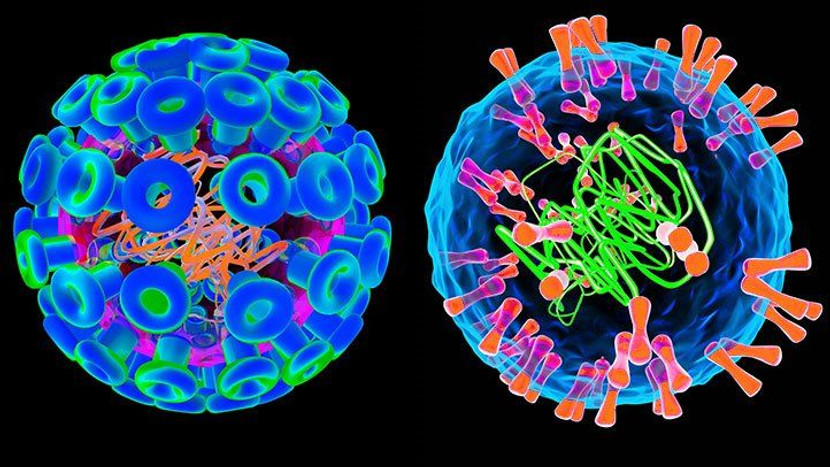A Comprehensive Guide to Understanding HSV-1 vs HSV-2
Do you know the difference between HSV-1 and HSV-2? Though these two sexually transmitted infections (STIs) share similar symptoms, some significant differences exist.
This comprehensive guide will help you understand the differences between HSV-1 and HSV-2, their transmission, diagnosis, and treatment options.
By understanding the distinctions between the two, you can make better decisions about protecting your health and that of your partners. Read on to find out more about HSV-1 and HSV-2.
What are HSV-1 and HSV-2?
Herpes Simplex Virus (HSV) commonly affects men and women of all ages. HSV can cause sores, blisters, and other skin conditions.
It is important to understand the difference between HSV-1 and HSV-2 to prevent or treat them appropriately.
HSV-1 and HSV-2 are two distinct types of herpes viruses. HSV-1 is primarily associated with oral herpes, while HSV-2 is generally related to genital herpes.
However, it is possible to have both types of herpes viruses on the same person simultaneously.
The main difference between HSV-1 and HSV-2 is the areas of the body they affect. HSV-1 typically causes cold sores and fever blisters around the mouth and face.
HSV-2 typically causes genital herpes, which can lead to painful blisters or ulcers on the genitals or rectum.
Both types of herpes can be transmitted through sexual contact and spread through kissing or sharing items such as drinking glasses or utensils.
An infected person can transmit the virus even if they do not have any visible symptoms.
To reduce the risk of transmission, it is important to practice safe sex and use protection such as condoms or dental dams during oral, anal, or vaginal sex.
In addition, it is important to avoid contact with open sores or blisters and to wash hands thoroughly after touching them.
HSV-1 and HSV-2 are both treatable, but there is currently no cure.
Treatment typically involves antiviral medications that can reduce the severity of symptoms and shorten the duration of outbreaks.
It is also important to practice good hygiene and to get enough rest so that your body can heal itself.
What are the symptoms of HSV-1 and HSV-2?
When it comes to the herpes simplex virus (HSV), there are two distinct types: HSV-1 and HSV-2.
Both can cause similar symptoms and are both contagious, but there are also several differences between the two.
Knowing the difference between HSV-1 and HSV-2 is important in diagnosis, treatment, and prevention.
The most common symptom of both HSV-1 and HSV-2 is a rash or sore on the skin or mucous membranes.
For HSV-1, these sores usually appear as blisters on or around the lips or in the mouth, while for HSV-2, they typically appear as small red bumps or blisters on the genitals or around the buttocks.
In some cases, HSV-1 can also cause genital infections, so it is important to be aware of this possibility.
Other symptoms associated with HSV-1 include pain during urination, swollen lymph nodes, fever, and flu-like symptoms.
With HSV-2, signs may also have painful blisters in the genital area and painful urination. In some cases, there may be no symptoms at all.
How is HSV-1 and HSV-2 transmitted?
While both HSV-1 and HSV-2 are contagious, they are transmitted differently. HSV-1 is usually spread through saliva or skin-to-skin contact with an infected person. T
his can happen through kissing, sharing items like eating utensils or lip balm or engaging in oral sex.
On the other hand, HSV-2 is usually transmitted through sexual contacts, such as vaginal, anal, or oral sex.
It is important to note that both HSV-1 and HSV-2 can cause recurrent outbreaks and require medical attention and treatment.
If you think you have either type of herpes, you must get tested and seek medical advice immediately.
What is the incubation period for HSV-1 and HSV-2?
The incubation period of herpes simplex viruses (HSV-1 and HSV-2) is typically two to twelve days after exposure. However, the exact period can vary depending on various factors.
HSV-1 is more commonly known as oral herpes and is usually associated with cold sores and fever blisters around the mouth and lips. Symptoms can appear within two days to two weeks after exposure.
On the other hand, HSV-2 is commonly referred to as genital herpes and is most often spread through sexual contact.
Symptoms can appear within three days to three weeks after exposure.
It’s important to note that some people may never experience any symptoms of HSV-1 or HSV-2, even if infected.
The virus can lie dormant in the body without causing visible signs or symptoms.
It’s also possible for people to be carriers of the virus and transmit it to other people without even knowing they are infected.
This is why it’s essential for everyone who is sexually active to get tested regularly.
How are HSV-1 and HSV-2 diagnosed?
The most reliable methods for diagnosing HSV-1 and HSV-2 are a blood test or a swab from a lesion or sore.
For a blood test, your doctor will look for antibodies your body has developed against either HSV-1 or HSV-2.
If you have been exposed to either of the viruses, your body will produce the corresponding antibodies, which will appear in the test results.
If you have a swab taken from a lesion or sore, your doctor will look for the virus itself.
This is known as PCR testing, which stands for Polymerase Chain Reaction. This is a highly accurate method for detecting both HSV-1 and HSV-2.
It is important to note that these tests can only detect active infection and will not show if you have been exposed to either virus.
In this case, antibody tests may be able to indicate past exposure, but these are only sometimes 100% reliable.
Once you have had a test and have been given the results, it is essential to discuss them with your doctor to get more information about the type of virus and how to manage any symptoms.
Treatment is available for both types of HSV infection and can help to reduce the risk of complications, so early diagnosis and treatment are key.
Summary
Herpes simplex virus 1 (HSV-1) and herpes simplex virus 2 (HSV-2) are two types of the herpes virus.
While both viruses can cause sores and lesions on the skin, HSV-1 is mainly responsible for oral herpes or cold sores, while HSV-2 is usually associated with genital herpes.
Understanding the difference between HSV-1 and HSV-2 is important to properly diagnose and treat each type of infection.
In conclusion, it is important to remember that HSV-1 and HSV-2 are caused by different viruses and have other symptoms, transmission methods, and treatments. Knowing the difference between the two types of herpes virus can help you stay safe and healthy.



